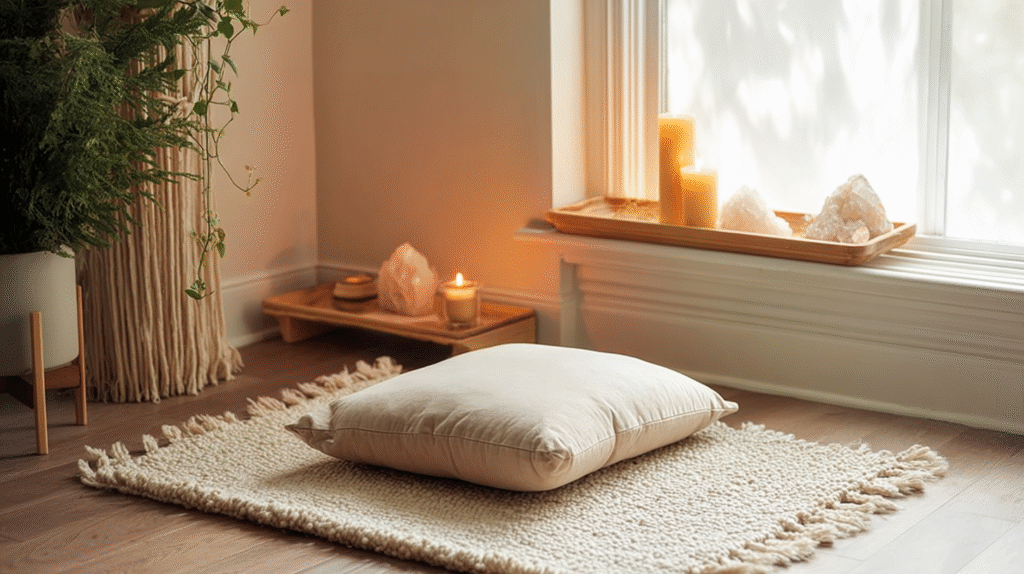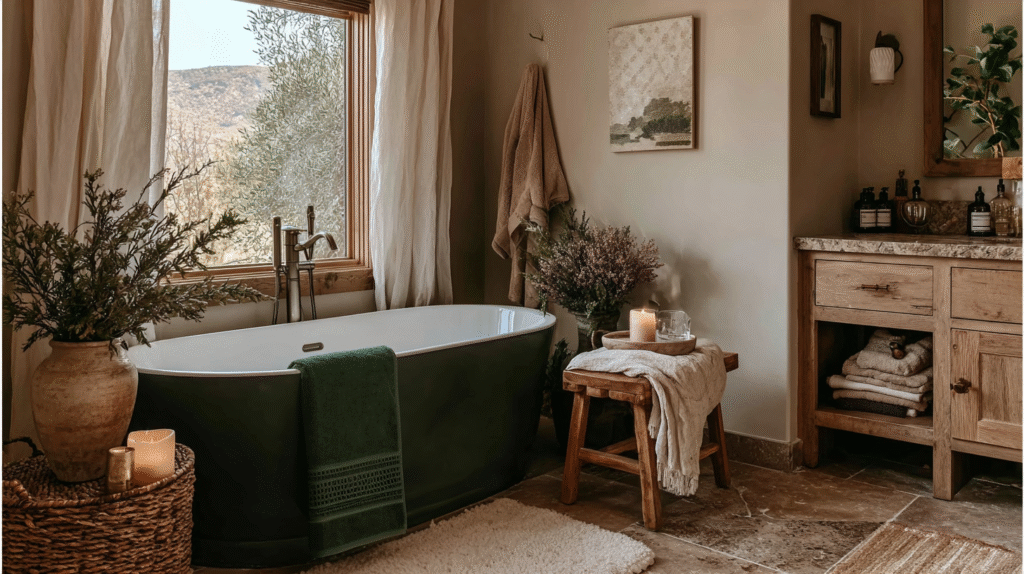This post may contain affiliate links, including those from Amazon Associates. If you make a purchase through these links, I may earn a commission at no additional cost to you. Learn more about our affiliate policy.
There is a moment each day when your body asks for quiet. A pause from screens, from noise, from the constant pull to do more.
Many women imagine that a wellness room, a calm, restorative space, requires an extra room or a generous budget.
But creating a sanctuary doesn’t depend on square footage or expensive decor. It’s about shaping one small space in your home to help your nervous system reset.
With thoughtful intention, you can design a space that holds you in calm for years to come.
Why a Wellness Room Matters
Your home carries the rhythm of your days. When it’s filled with clutter or overstimulation, your body stays on alert, even at rest.
A wellness room is an antidote to that. It’s a space where your body can feel safe and relax. Somewhere you can stretch, breathe, journal, pray, or simply sit in silence.
Design research shows that physical environments influence emotional regulation. Natural light, soft materials, and soothing textures help lower stress hormones and encourage relaxation.
You don’t need even need an entire room, just a corner that feels intentional. Think of it as your personal sanctuary for nervous system restoration.
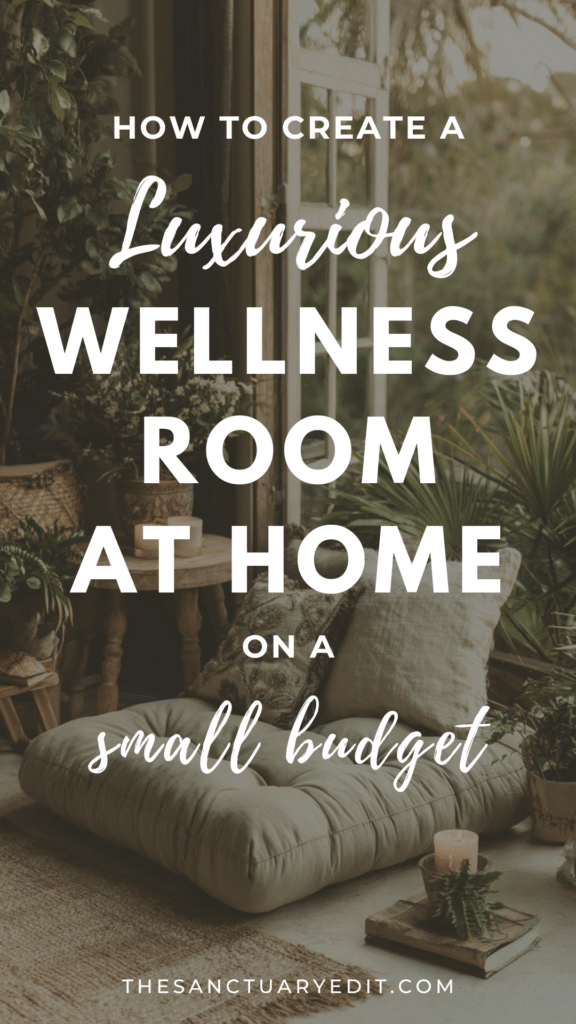
The Principles of a Budget-Friendly Wellness Room
Before you move furniture or buy a single thing, start with intention. The goal is not to fill the space with items, but to remove what competes with peace.
Clarity over clutter. A clear visual field immediately soothes the mind. Begin by decluttering the area you want to use. Empty it completely if possible, then bring items back one at a time with purpose.
Layered light, not more light. Replace harsh overhead bulbs with lamps or candles that cast a warm, diffused glow. Light that mimics natural daylight helps your body feel balanced and calm.
Texture and tactility. Choose natural fabrics like linen, cotton and wool to bring grounded softness. These materials invite touch and encourage the body to slow down.
Bring the outside in. A simple branch in a vase, a small plant, or even the sound of birds through an open window can reconnect you with nature’s rhythm.
Flexible zones, not rigid rooms. Even a single corner can become a wellness space. The aim is to cultivate energy, not square footage.
Mindful editing over buying. A true sanctuary begins with what you already have. Repurpose, rearrange, and soften before you spend.
If you want to extend this idea beyond one corner, explore how to start a slow living home one room at a time for a grounded approach to creating calm throughout your space.
Choosing Your Space
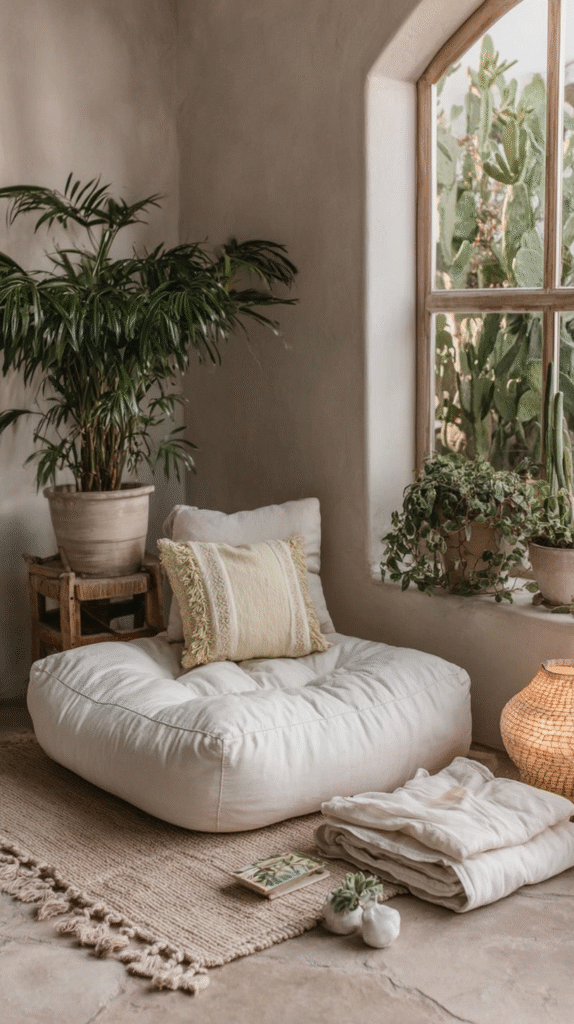
Start with the quietest area of your home. This might be a small corner of the bedroom, a window nook, or even a closet with the door removed.
Look for natural light if possible, but don’t let that be a barrier. Lighting can always be layered later.
Choose a place with enough privacy that you can close your eyes and breathe without interruption. A folding screen, a lightweight curtain, or even a plant divider can visually separate your nook from the rest of the room.
The purpose of this space is to help you reconnect with yourself. It doesn’t need to be perfect—it only needs to feel like yours.
Your Wellness Room Essentials
Think of this as a menu. You don’t need to include everything. A few key elements will transform even the smallest area into a haven.
Soft lighting
Avoid bright overhead lights. Instead, use a small lamp with a warm bulb, string lights, or even battery-operated candles. The goal is a soft glow that helps your nervous system unwind.
Seating or rest layer
Choose one grounding surface where you can sit or recline—a floor cushion, meditation pillow, or an old armchair draped in a blanket. This will become your anchor point, a place where you can return to yourself.
Textiles and layers
Layer fabrics to create warmth and comfort. Use what you have: a woven throw, an old rug, a piece of linen from your closet. Texture is what brings the sensory calm your body craves.
Nature and greenery
Plants are natural regulators of mood and air quality. Snake plants, pothos, or even a small vase of fresh cuttings can infuse your space with life. Dried flowers or branches also offer grounding beauty without ongoing care.
For more ways to weave nature into your interiors, see these easy ways to bring nature indoors to create more calm.
Scent and aroma
Scent shapes emotion instantly. Light a natural candle, use an essential oil diffuser, or simply simmer herbs on the stove before your wellness time. Lavender, sandalwood, and cedarwood are particularly calming.
Sound and stillness
Use gentle background music, nature sounds, or white noise if needed. A small speaker or app can create a cocoon of calm. If silence feels more restorative, let that be your soundscape.
Personal focus point
Add one object that centers you: a small bowl of stones, a photo that brings peace, a piece of art, or a handwritten affirmation. This visual cue can remind you why this space exists.
Portable wellness tools
If you practice yoga, stretching, or meditation, store your mat, blocks, or journal in a basket nearby. Keep it flexible so the space evolves with your routines.
Layout Tips for Small Spaces
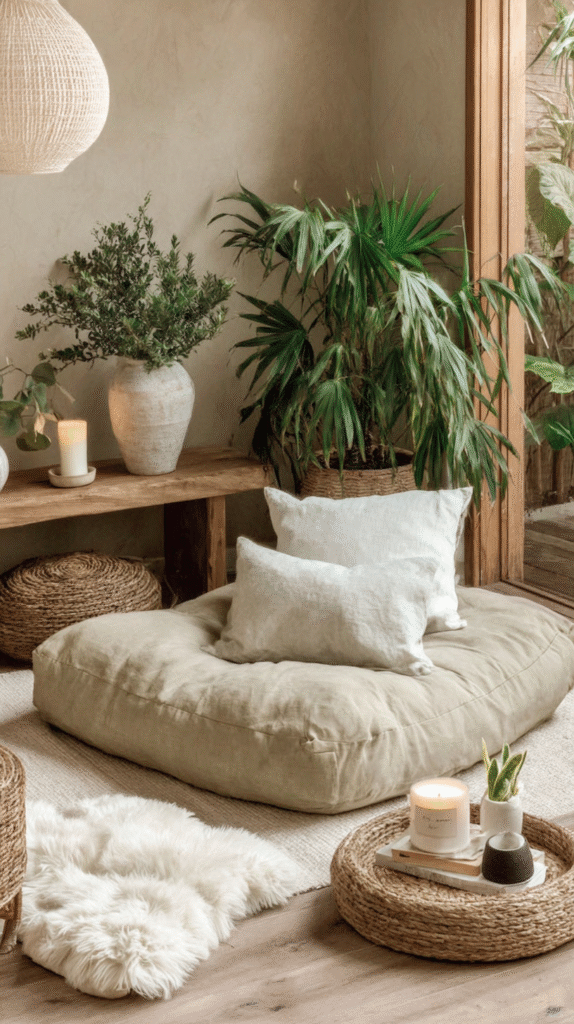
Creating a wellness space on a budget often means working with what’s already there. The secret lies in thoughtful arrangement.
Keep one clear focal point, a seat or rug, to signal where stillness begins. Use vertical space for shelves, hanging plants, or wall art to lift the eye and create openness. A mirror can help bounce light and make a small room feel larger.
If your home is shared or compact, consider creating a convertible setup. Foldable screens, baskets for supplies, and lightweight chairs make it easy to transform the area as needed. The goal is to maintain calm even in the movement of daily life.
Keep colors soft and cohesive. Shades of stone, ivory, sage, and clay tend to feel timeless and quiet. Avoid strong contrasts, which can overstimulate the senses.
Budget-Friendly Ideas and Creative Substitutions
You don’t need to buy new items to create calm. Look at your home through a different lens.
- A blanket can become a meditation mat.
- A bedside lamp can move to your wellness corner.
- An unused stool can hold your cup of tea or diffuser.
- A scarf can soften a wall or window.
- Empty jars can become vases or candle holders.
- A secondhand chair can find new life with a simple linen cover.
Rearranging existing pieces often changes how a space feels more than adding anything new.
Daily Practice
Once your wellness room or corner is set, begin using it in small, consistent ways. You might start or end the day there, even for a few minutes. Sit quietly. Stretch. Journal. Pray. Sip something warm. The more you associate this space with restoration, the stronger its calming effect becomes.
Treat it as you would a living thing. Return objects to their places. Smooth the blanket after use. Lightly dust the surfaces. These small acts of care create a rhythm of respect that deepens your connection with the space.
To deepen your daily rituals, try these 5 grounding techniques that help slow your life down; they align beautifully with the rhythm your wellness room is meant to support.
When You Don’t Have Much Room
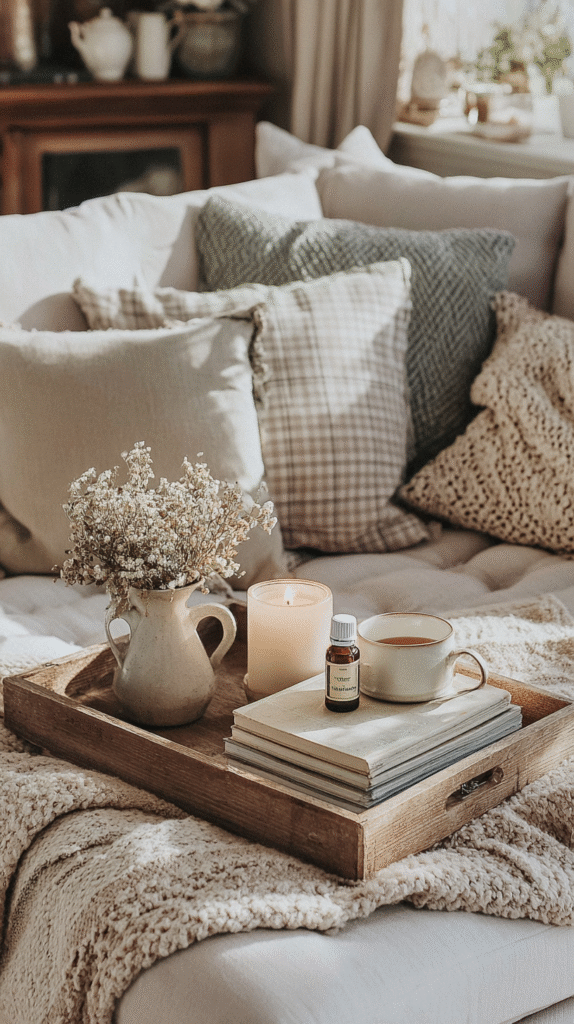
If you live in an apartment or shared home, remember that sanctuary doesn’t require isolation. You can still cultivate calm through small edits.
Turn a corner of your bedroom into your retreat. Use the same spot on your couch each morning for quiet time. Keep a portable tray with a candle, journal, and essential oil to move around as needed.
The point is not the room, it’s the ritual of creating space within your day to return to stillness.
Emotional Mindset and Presence
It’s easy to slip into the idea that calm requires more: more space, more decor, more budget. But wellness begins in simplicity. The quieter the design, the easier it becomes to hear yourself.
Your wellness room is not about performance. It’s a refuge from it. Whether it’s a window ledge with a single cushion or a repurposed closet with warm light, what matters is how it feels, not how it looks.
Be gentle with your expectations. There may be days when the room gathers dust or feels forgotten. That’s okay. Like your breath, you can return to it anytime.
A Gentle Invitation
This week, choose one small area in your home. Clear it. Place a seat, a soft light, and something living—a plant, a branch, or even a bowl of water. Spend five minutes there each day. Notice how your body begins to associate that space with ease.
Creating a wellness room on a small budget isn’t about design—it’s about devotion. To your peace. To your nervous system. To your right to rest.

